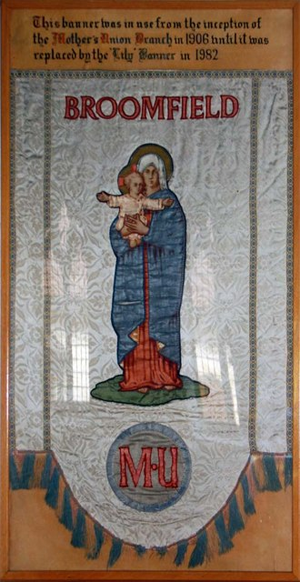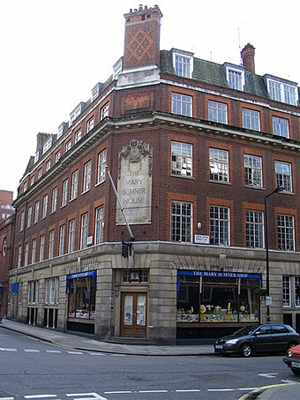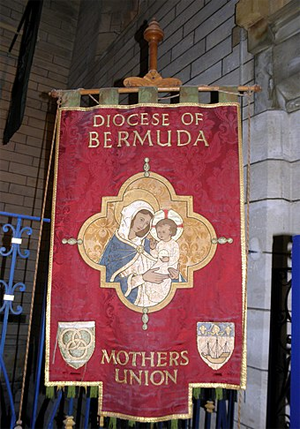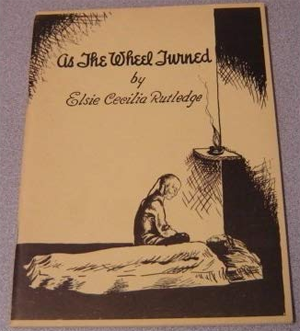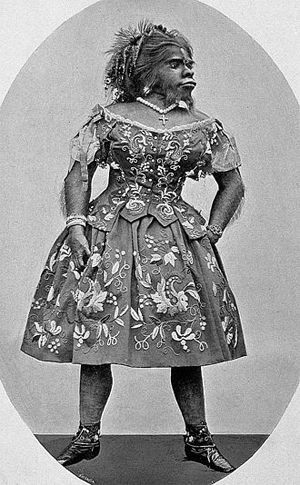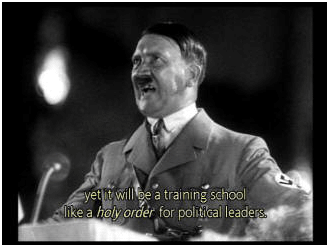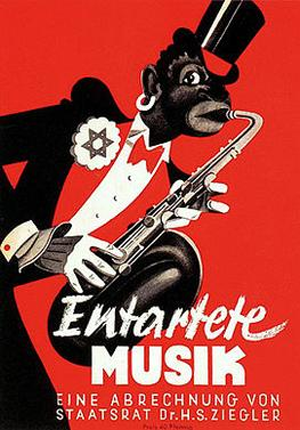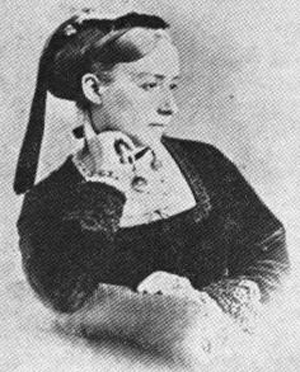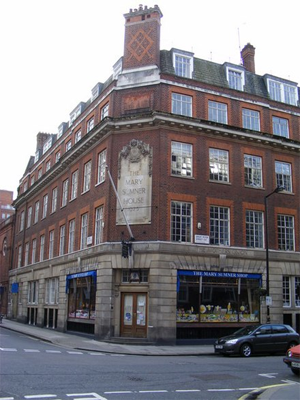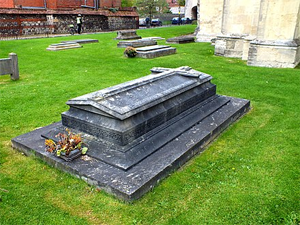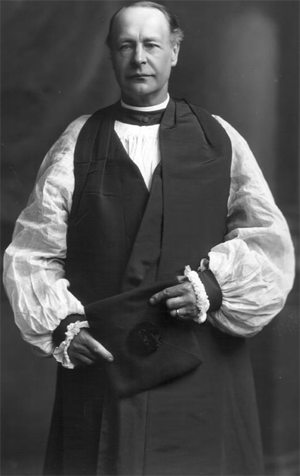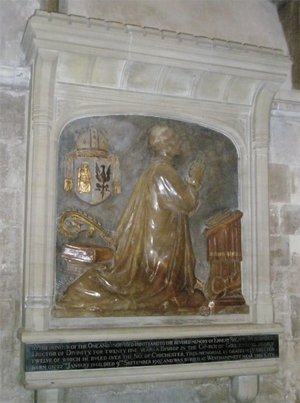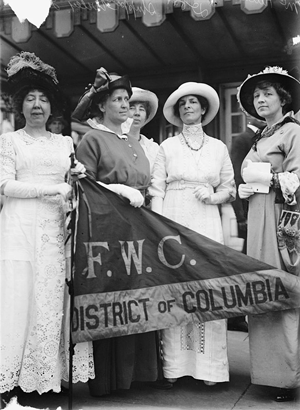The Canadian TheosophistVolume XXXV, No. 5
Toronto, Canada
July 15, 1954
Freda was concerned that the Indian authorities simply didn't understand the tradition of incarnate lamas, and their critical place in Tibetan society and spiritual practice. Little was done to identify these young lamas, some little more than infants. 'Nobody knew quite what to do with them,' Freda lamented to Olive Shapley. 'In the lamas we have inherited a tradition that dates back to the seventh century -- spiritual richness we can only as yet partially realise,' she wrote to friends. 'I am sure the whole world will ultimately be enriched.'
There are perhaps 200 high 'incarnate' lamas in the country now headed by His Holiness [the Dalai Lama] (including 40-60 child or adolescent incarnations: many of them young people of extraordinary intelligence and physical beauty) ... dedicated monks and lamas of a high standard of learning and spirituality number perhaps 2,500; in addition we have junior and simpler country monks, over 1,500 of whom have volunteered for roadwork. We all pray ultimately we may be able to settle the bulk of the refugees in big land settlements.32
Nehru had taken a diplomatic risk by hosting the Dalai Lama and tens of thousands of those who followed in his wake. But there was a limit to the amount of official support and funding that could be expected for the refugees' welfare, with the most urgent and unmet need being the upkeep and education of the young lamas.
Freda was entirely comfortable soliciting money and support from the rich and well connected. She had also established links with Buddhist and similar groups in London and elsewhere. Within weeks of returning to Delhi from the camps, she sought to turn her extensive network to the Tibetans' advantage. In mid-August 1960, she wrote a long letter to Muriel Lewis, a California-based Theosophist with whom she had corresponded for several years. Muriel ran the Mothers' Research Group principally for American and Western Theosophists, a network which had an interest both in eastern religions and in parenting issues.I should like to feel that the 'Mothers' Group' was in touch with all I do (Freda wrote). Do you think it would be possible for some of your members to 'Adopt' in a small way -- write to, send parcels to -- these junior lamas? Friendships, even by post, could mean a great deal. We could work out a little scheme, if you are interested. The language barrier is there, but we can overcome it, with the help of friends.
Freda's family had, she recounted, already taken a young lama under their wing.
Last year my son [Kabir] 'adopted' one small lama of 12, sent him a parcel of woollen (yellow)clothes, sweets and picture books, soap and cotton cloth. This time when I went to Buxa, Jayong gave me such an excited and dazzling smile. He was brimming over with joy at seeing me again! It is very quiet away from your own country and relations for a small lama with a LOT TO LEARN. It was of course most touching to see the 'Mother-Love' in the faces of the tutor-lamas and servant lamas who look after the young ones. They are very tender with them.
Freda's letter was included in Muriel's research group newsletter and subsequently reprinted by the Buddhist Society in London. This was the founding act of the Tibetan Friendship Group, which quickly established a presence in eight western countries and was the conduit by which modest private funds were raised for the refugees.34 It outlasted Freda and ... it helped give prominence to the Tibet issue as well as the well-being of the Tibetan diaspora.-- The Lives of Freda: The Political, Spiritual and Personal Journeys of Freda Bedi, by Andrew Whitehead
We have been asked to draw attention to the Mothers Research Group and its magazine Mothers' Bulletin. The Group is an activity of Theosophical members, though we assume that membership is by no means confined to theosophists. The aim and purpose is to apply Theosophy to the practical problems of childhood and to the relationships between children and parents. The current issue of Mothers' Bulletin contains instructive and interesting articles on these and associated subjects. All services are given voluntarily and all proceeds go towards publication of the magazine and the many booklets published by the Group. The Theosophical teachings presented in the magazine are in the familiar terms and atmosphere of Neo-Theosophy; this is especially noticeable in the articles on the Order of the Round Table. However, one can respect the idealism, unselfish endeavor and humanitarianism without arguing about opinions on these points. The children exposed to these teachings will become men and women who must eventually face realities and put fairy tales behind them. Mothers' Bulletin is published quarterly and may be ordered from Mothers Research Group, Route 2, Box 586, Ojai, California; subscription $1.00 a year.
THE CANADIAN THEOSOPHIST
VOL. XXXV, No. 5 Toronto, July 15th, 1954 Price 20 Cents
The Theosophical Society is not responsible for any statement in this Magazine, unless made in an official document
SOWING AND REAPING
A Study of Karman and Reincarnation
By Iverson L. HarrisMost of us are seeking answers to the questions which we silently ask ourselves when we are not so preoccupied with earning a living that we yearn to understand life; when we are not so busy going places and doing things in order to escape from having to think, that we actually choose to think, and to think hard - as to why we are here on earth, whence came we, in what direction we are now traveling and what is our destiny.
Two of the most illuminating doctrines for answering our questions are karman and reincarnation. To those of you to whom the teachings are new and who may not have given them serious thought, I would suggest that, before rejecting them, you consider this introduction to them with open minds and then weigh the validity of these conclusions
There are no teachings or theories known to me which solve more logically and satisfactorily the great ethical and spiritual questions with which every thinking man occupies himself in moments of serious reflection and upward striving. The doctrines of karman and reincarnation do not contravene any facts known to science. In no way do they clash with man's innate sense of cosmic law and order. They satisfy man's yearning for universal justice and harmony. They give purpose and direction to our lives. They enable us to meet our personal trials and difficulties with understanding and with resulting fortitude. These doctrines are in no sense an affront to our finest feelings of compassion and kindliness. They account for youthful geniuses and prodigies in a way that neither physical heredity nor early environment can possibly explain. They give a reasonable explanation for the obvious and sometimes tragic disparities in opportunity with which children come into this world. In other words, they ring true when examined from the scientific, the philosophical and the religious standpoints.
Let us now review some of the basic tenets embraced in the doctrines of karman and reincarnation.
In the sixth century, B.C., the Lord Buddha restated to the world in clear, unmistakable and inspiring language, these two doctrines of karman and reincarnation, as the key to liberation from the woes which he saw afflict all mankind. Here are some of His teachings, as told in verse by Sir Edwin Arnold in The Light of Asia:
The Books say well, my Brothers! each man's life
The outcome of his former living is;
The bygone wrongs bring forth sorrows and woes,
The bygone right breeds bliss.
That which ye sow ye reap. See yonder fields!
The sesamum was sesamum, the corn
Was corn. The Silence and the Darkness knew!
So is a man's fate born.
He cometh, reaper of the things he sowed,
Sesamum, corn, so much cast in past birth;
And so much weed and poison-stuff, which mar
Him and the aching earth.
If he shall labor rightly, rooting these,
And planting wholesome seedlings where they grew,
Fruitful and fair and clean the ground will be,
And rich the harvest due.
Some six hundred years later, St. Paul repeated the identical message - or, at least that part of it dealing with sowing and reaping, in his Letter to the Galatians:
"Whatsoever a man soweth, that shall he also reap." (vi., 7.)
"He that soweth to his flesh shall of the flesh reap corruption; but he that soweth to the Spirit shall of the Spirit reap life everlasting." (vi., 8.)
"The harvest of the Spirit is love, joy, peace, good temper, kindliness, generosity, fidelity, gentleness, self-control; there is no law against those who practise such things." (v., 22, 23, Moffatt's translation,)
These are spiritual and ethical truths which can be verified by any man who will conscientiously test them in his own life. Can anything be more scientific than this? The empirical method of science is the best means of proving the truth of ethical and spiritual laws, quite as much as it is the best method of establishing the validity of physical laws. For this reason, the earnest Theosophical student accepts the authority of the great spiritual sages and seers, because he has tried to live according to their precepts, and he has found that, to the degree that he carries out the injunctions, the results achieved are exactly as promised by the Teachers.
One of the basic instincts in man is a hunger to see justice done. A child will accept a reprimand without rancor, if he has done something that merits it; but scold or punish a child unjustly and you may sear its soul and destroy its confidence in you for life. When men experience defeat, loss, suffering, harshness and cruelty at the hands of their fellows, with apparently no just cause, their souls rebel against the seeming injustice.
But satisfy a man that whatever happens to him is the fruit of his own sowing, that he is now reaping the consequences of his own thoughts, words, acts, feelings, etc., and you have already given him release from the gnawing, corroding bitterness that can sour and distort his entire outlook on life. However, you can never convince a man that he is always reaping the harvest of his own sowing, if he thinks that he, the real man, is merely his body, that he began his pilgrimage when he was born into this present life, and that he ends it forever when the doctor pronounces him dead. You will never reconcile facts as they are with men's innate sense of justice until you convince them of the inevitability of reincarnation - of life after life on earth, in which we reap the harvest of our previous sowings, and, hopefully, sow seeds for better crops in lives to come - crops to be harvested not somewhere else, but right here on this earth, the field of our sowing.
"Be not deceived: God is not mocked; for whatsoever a man soweth, that shall he also reap."
Or, as Mohammed puts the same teaching:
"Whosoever hath done evil of the weight of an ant, it shall be done unto him again; and whosoever hath done good of the weight of an ant, he shall receive the reward of it."
Whatever I think, or feel, or say, or do, sets in motion a force of some kind in the world of thought, of feeling, of action; and the milieu in which this force has been set in motion reacts in exact, mathematical ratio to the strength of the force set in motion. And quite definitely, it reacts primarily upon the one who set the force in motion.
This is what we call the doctrine of Karman, from a Sanskrit verbal root, Kri, meaning `to do'; hence, action, action and reaction, Newton's third law of motion: "To every action there is an equal and opposite reaction," not merely on the physical plane, but on all planes.
The word Karman has been adopted into the English language, usually in its nominative case, as Karma. It is known as `The Law of Cause and Effect,' the `Law of Consequences,' and `The Law of Ethical Causation.' Coupled with the doctrine of reincarnation, which is essential for its logical fulfilment, it is briefly summarized in simple terms by England's Poet Laureate John Masefield, in his verses entitled, A Creed, from which I quote the following:
I hold that when a person dies
His soul returns ,again to earth;
Arrayed in some new flesh-disguise
Another mother gives him birth.
With sturdier limbs and brighter brain
The old soul takes the road again.
Such is my own belief and trust;
This hand, this hand that holds the pen,
Has many a hundred times been dust
And turned, as dust, to dust again;
These eyes of mine have blinked and shone
In Thebes, in Troy, in Babylon.
All that I rightly think or do,
Or make, or spoil, or bless, or blast,
Is curse or blessing justly due
For sloth or effort in the past.
My life's a statement of the sum
Of vice indulged or overcome.
So shall I fight, so shall I tread,
In this long war beneath the stars;
So shall a glory wreathe my head,
So shall I faint and show the scars,
Until this case, this clogging mold,
Be smithied all to kingly gold.
Students of Theosophy need no argument to convince them of the truth of karman and reincarnation. But the doctrines are still rather new to the West. Unfortunately, shallow thinkers and unphilosophical minds, who care more for a jest than for truth, have at times made the teaching of reincarnation seem absurd by dressing it up in halloween masks that are ridiculous and sometimes frightening.
Because we regard the doctrines of karman and reincarnation as universal truths, it does not mean that every extravagant human opinion about them is equally true. The fact that we reincarnate is no evidence at all that we were some outstanding historical figure in our last life! I am told that our mental institutions shelter numerous Napoleons and Cleopatras! If we are really profound thinkers or conspicuously successful men of action today, there is the possibility, nay, even the likelihood, that we were such in our past incarnations; for, according to the Eastern teaching, we pick up the thread of our existence exactly where we left it in our last life - no better nor worse than we had then made ourselves to be.
Again, those who believe, either seriously or in jest, that men are sometimes reborn into animal forms, are ignorant of the real teaching, which is: "Once a man, always a man."
Further, the fact that a person does not want to be born again because of having already suffered enough in this one life, is no argument against reincarnation. If it is a law of nature, he will be born again, whether he will or whether he nill; and not until he has learned all the lessons to be learned on this planet Terra can he hope to graduate to higher spheres.
The question is often raised: "If I have lived before, why do I not remember my past life?" The answer, reduced to its simplest terms: Ordinary memory is a function of the physical brain, and we are about as likely to have the same brain when we reincarnate as we are to have the same hat. The mask of personality which we wear neither reincarnates nor remembers. But our individuality, the reincarnating ego or thread soul, which progresses from life to life, has a memory of its own.
Our innate character is the soul's memory of former lives that we bring with us into this life - our inborn aptitudes, tendencies, proclivities, essential characteristics, the thread of individuality that we carry with us from the period when self-consciousness has awakened in any one life until we bid a long farewell to our friends and loved ones and lie down to pleasant dreams. The death of the body is not sufficient to break the thread of individual existence. We continue in death exactly the same individual that we were before death, except for the dissipation of the physical and astral bodies. It behooves us to be fit company for ourselves to the very end; for, no matter where we go, either during this life on earth or in the afterdeath states, we have to take ourselves along with us! And the less we think about ourselves, the better company for ourselves are we at all times! It has been rightly said that the man who is all wrapped up in himself has a very small package!
I shall never forget what an illumination it was to my mind and understanding to learn that karman is not something outside ourselves, but that we are our own karman, and that we become what we make ourselves to be.
As H.P. Blavatsky says in The Secret Doctrine: (I. 17)
"The pivotal doctrine of the Esoteric philosophy admits no privileges or special gifts in man, save those won by his own Ego through personal effort and merit throughout a long series of metempsychoses and reincarnations."
And again:
"Verily, there is not an accident in our lives, not a misshapen day, or a misfortune, that could not be traced back to our own doings in this or in another life." (Ibid. I, 643.)
With every thought that we think, we are weaving our own webs of destiny. We do this continuously at every moment of our conscious existence. During the little death that we call sleep each night, and during the long sleep that we call death, we are not consciously weaving this web of destiny; we are merely digesting and assimilating the experiences of the previous day or of the previous lifespan. The short sleep between two days, or the long sleep between two earthlives, can be filled with nightmares, or it can be brightened with the subjective realization of all our most cherished hopes and our loftiest aspirations. It all depends upon the kind of thoughts we think during our conscious existence. The implications are obvious and inescapable.
The Greeks had a saying, Hypnos kai thanatos adelphoi: "Sleep and death are brothers."
We lay us to sleep at night in perfect confidence that we are well cared for; and we take it for granted that when the morning comes the thread of consciousness, on which our life is builded, will be picked up again where we left it on retiring. Whither do we go during sleep? Whither the thoughts and tendencies of our waking hours drew us: not far away from the body or the personality if our consciousness has been largely centered therein during the hours when we were responsible for our thoughts and acts; but ranging the starry spaces and achieving the conquests of the soul, if the tendencies of our thoughts and aspirations are heavenwards and divine. And the same is true at death - only more so.
I have tried to approach our theme in the same spirit of reasonableness in which Socrates discoursed with his friends gathered around him in the death-chamber. By his discourse he kindled a flame that will never be extinguished for men who have sparks of that same spiritual fire aglow in their own breasts. You will recall that under Athenian law he was permitted to suggest an alternative punishment to the death-sentence imposed upon him, such as banishment or paying a heavy fine. It was then that he made one of the grand historical jokes by saying that death was not certainly an evil; it might be a very good thing; whereas banishment was assuredly an evil and so was paying a fine. Besides, he had no money with which to pay it. So he suggested that Athens should support him for the rest of his life in the Prytaneum as a public benefactor! He then quietly and deliberately elected to accept the sentence imposed upon him and called in his friends to discourse with them on reincarnation. He said that the doctrine was an old tradition, and what could be more reasonable than that the soul, departing to Hades, should return again in its season; the living born from the dead, as the dead from the living? Did not experience show that opposites proceed from opposites? Then birth must proceed from and follow death. If the dead came from the living, and not the living from the dead, the universe would at last be consumed by death. There, too, there was the doctrine that knowldege comes from recollection; what is recollected must have been previously known. Our souls must have existed, then, before birth.
There is no dogmatizing in this; there is no assumption of supernormal knowledge, even if he had it. There is nothing but an appeal to sweet reasonableness. And then, when Crito asks Socrates: "How shall we bury you?", the wisest of the Greeks turns to the others present and says: "I cannot persuade Crito that I here am Socrates - I who am now reasoning and ordering discourse. He imagines Socrates to be that other thing of sinews and muscles, whom he will see by and by, a corpse."
We shall never understand the mysteries of death, until we cease identifying our selves with the bodies we live in - until we realize instead that essentially man is a stream of consciousness. Further, that the opposite of death is not life, which is eternally and everywhere existent in some form, but birth.
Carlyle tells us in Sartor Resartus:
"Death and Birth are the vesper and matin bells that summon mankind to sleep and to rise refreshed for new advancement."
In his Intimations of Immortality, Wordsworth expresses an even profounder thought:
Our birth is but a sleep and a forgetting
The Soul that rises with us, our life's Star,
Hath had elsewhere its setting
And cometh from afar:
Not in entire forgetfulness,
And not in utter nakedness,
But trailing clouds of glory do we come
From God, who is our home.
(cont'd on p. 77)
NOTES AND COMMENTS BY THE GENERAL SECRETARY
To the Members of the Canadian SectionOn assuming office for the tenth year in succession I feel it is incumbent upon me to bare my soul as it were to the members who have elected me so often to the post that I hold. First, I should thank you for the confidence you have reposed in me for so long, in spite of the fact that when I took over as I informed you at the time, I did so in the belief that it would not be for long, as I did not feel that I had the necessary theosophical background and learning for the job. I am still of the same opinion, but have carried on, firstly because of your annual decision and secondly because, in spite of my shortcomings, I felt I could serve Theosophy by bringing what a ability I had, in the way of service, until another better fitted for the post would assume the responsibility.
There are many things that could be done, for instance, tho' I have held my office for nearly a decade, I have not yet visited all the lodges. On the face of it this seems unpardonable. But what are the facts? Some of the lodges are two thousand miles away - to visit them means time and money. The journeys could more or less be made to fit in, but what about the cost? The ideal would be to have a general secretary with a private income who could delve into his own pockets for the necessary funds. But you have selected one who has but a sparse amount of this world's goods, so the natural corrollary is that he should be supplied with the normal funds to draw upon. But it is not so, and when I took office I recognized this fact at once. Any of you who are sufficiently interested in scanning the annual financial statements will acknowledge that this is so.
One of my first efforts then was to circularize the lodges as to whether they would agree to raising the annual dues. This was turned down, and even today when the costs of everything has soared to unprecedented heights, our section is carrying as best it may, on the original rate of $2.50 per member per annum. And you must realize that that is practically the only source of revenue we have for the General Executive to carry out its obligations. I am well aware that some lodges have their own extra dues, and that their members donate to their lodges as well, but where does the General Executive come in? and it represents the whole of Canada! I must not forget to mention that a few, very few members are alive to this fact and send in donations, and to them we are very thankful.
If there were funds in hand, and a sufficient number of willing workers, there are many things that could be done, additional publicity - special lecturers - helping the poorer lodges - visiting the lodges, finding out the weaknesses, and the possibilities - and a hundred other things.
Our magazine takes most of our income; but it is an asset that is indispensable, and is moreover looked upon as one of the best of its kind, but even that had to be curtailed to half its original size, and to cap all, there are ominous signs of costs still going up.
In telling you all this I am taking you into my confidence and asking you in all seriousness, what can be done, not only to maintain our standards but, with an eye to the future, to further Theosophy in Canada? All of us are agreed that our philosophy is worth having, that we have something that is advantageous not only to ourselves but to the world in general. I would urge the members and the lodges to consider the matter in all seriousness, and that without delay. The time is coming for a new Outpouring, and we, here in Canada should be ready for the occasion. On my part I am at your service ready and willing to give the best of my abilities, and to do everything in my power to further Theosophy which I am convinced is the salvation of the world.
***
It has been a great pleasure to welcome the following new members into the Society during the past year: Mr. John C. Allan, Toronto Lodge; Mrs. Lillian Smeed, Edmonton Lodge; Dr. G.K. Korbacher, Toronto Lodge; Mrs. Ilse Korbacher, Toronto Lodge; Miss Anna F. Almas, Toronto Lodge; Mrs. Elonore A. McGlasham, Toronto Lodge; Mr. Rodomont V. Grimmon, Montreal Lodge; Mr. Leon T. Smith, Toronto Lodge; Mrs. Doreen Chatwin, Vancouver Lodge; Mr. William J. Dean, Member at Large; Mr. John H. Heiron, St. Thomas Lodge; Mr. Erroll E. Lovis, Toronto Lodge; Mr. Hubert Jamin, Montreal Lodge; Miss Thelma Johannes, Montreal Lodge; Mr. W.R. Lesueur, Toronto Lodge; Mr. Karl Matejcek, Toronto Lodge; Mr. T.G. Davy, Toronto Lodge; Mrs. Reta Hoad, Toronto Lodge.
***
It is with deep regret I announce the passing of yet two more members from our midst: - Mr. Herbert Daines of the Vulcan Lodge died last May. He was an old member having joined the Society way back in 1923. He was a zealous and devoted member through the years and we deeply regret his passing. Our sympathy is extended to his widow in her sad loss. And Mrs. Edna Webb (erstwhile Blais) a member of the Hamilton Lodge since 1952. She was keenly interested in Theosophy and was a regular attendant at the meetings. Our sympathy is extended to Mr. Webb and family.
**
I have received a letter from the General Secretary of Vietnam, that distressed country so much in the news these days. It is printed elsewhere in this issue and I hope that its poignancy and idealism will awake an answering chord in the hearts of our members, and that the answer from Canada will live up to her reputation in the eyes of the world. Members may, if they wish, send donations direct to me at 52 Isabella St., Toronto 5, and I will be happy to forward them.
- E. L. T.
***
ANNUAL MEETINGThe Annual Meeting of the General Executive, Theosophical Society in Canada was held at 52 Isabella St., Toronto on Sunday, July 4th, 1954. Members present were Miss M. Hindsley; Messrs. D.W. Barr, C.M. Hale, G.I. Kinman, and the General Secretary. There is little of moment to report. The Financial Statement showed a slight increase on last year. The membership was down owing principally to the delay of members sending in their dues. A letter from the General Secretary of Vietnam was sympathetically received and discussed, is to be printed in the magazine. The next Quarterly Meeting was arranged for the 3rd of October.
- E. L. T.
***
Word has been received from Mr. Boris de Zirkoff that he is at present busy checking proofs of the new volume of H.P. Rlavatsky Collected Writings. The work is coming along well but the book will not be ready for distribution until November. Considerable interest has been shown in the project and a number of orders have been received. Those who wish to obtain the book direct from the publisher should send their orders to Theosophia, 615 So. Oxford St., Los Angeles 5, California.
***
THE CANADIAN THEOSOPHIST
- The Organ of the Theosophical Society in Canada
- Published on the 15th of every month.
- Authorized as second class mail, Post Office Department, Ottawa.
[[Seal here]]
- Subscription: Two Dollars a Year
OFFICERS OF THE T.S. IN CANADA
GENERAL EXECUTIVEDudley W. Barr, 52 Isabella St., Toronto, Ont.
Charles M. Hale, Box 158, New Liskeard, Ont.
Miss M. Hindsley, 745 Bloor St. W., Toronto, Ont.
George I. Kinman, 46 Rawlinson Avenue, Toronto, Ont.
Peter Sinclair, 4941 Wellington St., Verdun, Quebec
Washington E. Wilks, 925 Georgia St. W., Vancouver, B.C.
Emory P. Wood, 12207 Stony Plain Road, Edmonton, Alta.
GENERAL SECRETARYLt.-Col E.L. Thomson, D.S.O., 54 Isabella St., Toronto, Ont.
To whom all payments should be made, and all official communications addressed
***
EDITORIAL BOARD, CANADIAN THEOSOPHIST
All Letters to the Editor, Articles and Reports for Publication should be sent to The Editor: Dudley W. Barr, 52 Isabella St., Toronto 5, Ont.
Letters intended for publication should be restricted to not more than five hundred words.
Printed by the Griffin & Richmond Co., Ltd., 29 Rebecca Street, Hamilton, Ontario
***
OFFICE NOTESHarper & Brothers, New York, announce the publication of two new books by Mr. J. Krishnamurti, Education and the Significance of Life, price $1.50 and The First and Last Freedom, price $3.50. These books may be obtained in Canada from The Musson Book Co. Ltd., 103 Vanderhoof Ave., Toronto 17. Aldous Huxley has written the foreword to The First and Last Freedom in which he says, "In this volume of selections from the writings and recorded talks of Krishnamurti, the reader will find a clear contemporary statement of the. fundamental human problem, together with an invitation to solve it in the only way it can be solved, - by and for himself."
***
Increased interest in The Secret Doctrine is indicated by the fact that a recent order for additional copies for Toronto Lodge has been delayed until further sets are bound. The Secret Doctrine is one of the great source books of Theosophy; a wider knowledge of its contents, concentrated thought on its teachings and meditation on their implications, will give the student a good understanding of what Theosophy is - and is not.
***
We have been asked to draw attention to the Mothers Research Group and its magazine Mothers' Bulletin. The Group is an activity of Theosophical members, though we assume that membership is by no means confined to theosophists. The aim and purpose is to apply Theosophy to the practical problems of childhood and to the relationships between children and parents. The current issue of Mothers' Bulletin contains instructive and interesting articles on these and associated subjects. All services are given voluntarily and all proceeds go towards publication of the magazine and the many booklets published by the Group. The Theosophical teachings presented in the magazine are in the familiar terms and atmosphere of Neo-Theosophy; this is especially noticeable in the articles on the Order of the Round Table. However, one can respect the idealism, unselfish endeavor and humanitarianism without arguing about opinions on these points. The children exposed to these teachings will become men and women who must eventually face realities and put fairy tales behind them. Mothers' Bulletin is published quarterly and may be ordered from Mothers Research Group, Route 2, Box 586, Ojai, Cali-fornia; subscription $1.00 a year.***
CORRESPONDENCEFrom the General Secretary of the Theosophical Society of Vietnam to Theosophists of the Whole World
Dear Brothers and Sisters:
The conditions prevailing in our country for nine years, of which you have certainly been kept informed by the international press, permit us to enlarge our field of activities.
If, as it said in At the Feet of the Master, it is nobler and more useful to feed the souls rather than the bodies of human beings, it is sometimes most timely, and even an absolute necessity to feed their bodies before spiritual food can be considered.
Such is the plight, in our country, of thousands and thousands of children, especially newborn babes, victims of the war, abandoned, and doomed to a sure death from lack of care and food. Faced with this heart-rending situation, it is our duty to act quickly.
The Orphanage of the Theosophical Society of Vietnam was founded on the 1st October 1953, where already some thirty infants receive the maternal and devoted care of Mrs. Nguyen-Van-Luong nee Ho-Thi-Co, who, having dedicated herself to the service of the Mother of the World, spares neither her time nor her health to look after them well. Two doctors attend them regularly, three times a week. But our action is not confined to that charitable institution only.
We look much further into the future. We have decided to train our wards, the orphans taken in and every child entrusted to our care, to become, one and all, cultured theosophists, who will make good tools in the hands of our Highly Venerated Masters. We shall watch the growth of their physcial, intellectual, moral and spiritual progess while they are attending the schools run by our Brother and Sister graduates. They will live together in a colony specially established for them, where they will each found a family, should they wish to do so. The more gifted among them will be sent to Adyar, to follow the courses of the School of Wisdom.
In short, this is the beginning of a mighty task, the establishment of theosophical communities in the near future. We have an extensive program before us, one that we have been planning for twenty years, and which needs the work and sacrifice of several successive generations to be even partly accomplished.
But we are only few at present, only three hundred, and most of us are not well-off; our countrymen have given us their obols, but these, for the time being, are hardly sufficient to cover our expenses. And so, to carry out the difficult task that we have willingly assumed, we are asking for the generous help of our Brother and Sister Theosophists all over the world, who, -knowing perfectly the scheme of evolution drawn by Logos for our planetary system, would be willing to give us their much appreciated help, to the best of their ability.
If we do not act, we shall not know to what extent karma has permitted us to help the country in which we are incarnated at present and in so doing to lighten a little the heavy karma of the world.
We are well aware that exchange restrictions are very strict nowadays, nevertheless, gifts could be collected by the General Secretary of each national section and then deposited in a bank to the credit of "The Theosophical Society of Vietnam", Account No. 71080, Banque Franco-Chinoise, 178 rue Le-Loi, Saigon (Sud Vietnam), (1).
We shall keep you informed of the progress of our work.
Hoping to hear from you, we beg you, Brothers and Sisters, to accept our fraternal greetings.
- Pham-Ngoc-Da, Headmaster of the Girls' School, Chaudoc (South Vietnam)
***
SURVEY OF EARTH?In February, 1953, the United States Air Technical Intelligence Center in Washington, D.C., released to Major Donald E. Keyhoe, U.S. Marine Corps (Retired), for publication purposes, a long list of UFO sightings. These are verified reports of sightings of "flying saucers" which ATIC describe as Unidentified Flying Objects. Doubleday & Co., New York, have published Major Keyhoe's book, Flying Saucers from Outer Space, and it can now be bought in complete, unabridged form (Derma Star Edition) for only 25c, a fact which is perhaps not without significance under the circumstances. The clothbound edition, published by Henry Holt Co., is $3.75. The publishers sought and were given a statement from the U.S. Air Force that the latter regard Major Keyhoe as a responsible, accurate reporter whose long association and cooperation with them in their study of UFO qualifies him as a leading authority.
Apparently within the U.S. Air Force, one a group is extremely apprehensive about the possible effect on the public of an official statement of facts accumulated since 1947. It was on June 24th of that year that an Idaho private pilot, Kenneth Arnold, sighted nine huge, gleaming discs racing along in a column near Mount Rainier, Washington. Arnold estimated their size at 100 feet in diameter and their speed at more than 1200 miles per hour. Because he described the discs as saucerlike, unfortunately the name stuck and "flying saucers" became a joke and a handicap to serious investigation. Since Arnold's 1947 sighting, hundreds of daytime and night sightings of UFO have been verified not only in America but by pilots all over the world, and for several years a selected group of high government officials have been secretly briefed, according to Major Keyhoe, and even the skeptics have emerged noticeably jolted by the disclosures.
In releasing the reports for publication, the Air Force has stated that they and their investigative agency, Project Bluebook, are aware of Major Keyhoe's conclusion that flying saucers are from another planet. They say they have "never denied that this possibility exists." While some of the personnel still think the saucers may be some strange natural phenomena completely unknown to us, the Air Force says that if the apparently controlled maneuvres reported by many observers are correct - and the evidence is overwhelming - then the only remaining explanation is the interplanetary answer.
The second group of U.S. Air Force officials seem to think the American public "can take it," that there is much more to be lost than gained by withholding the information. It is this group who succeeded in having the confidential sighting reports unwrapped. As a skilled writer, Major Keyhoe was evidently expected to cushion the truth in a pleasant, conversational style of writing which certainly he has done. The book presents authentic, convincing data and the opinions of scientists from several countries.
What are these facts about UFO which government officials fear would panic citizens? Chiefly they are these: That our earth is under the constant observation of an obviously superior race from another planet, and that they use flying machines of at least five different types and many sizes, all capable of incredible speeds.
Type No. 1 is described as "Mother Ships" which carry and discharge the disc-type machines. These mother ships are large rocket or cigar-shaped machines usually reported at very high altitudes. Sizes estimated by trained observers are from 600 feet to more than 1,000 feet in length with some indications they may be much larger. Color, silvery. Speed recorded by radar, over 9,000 miles per hour with visual estimates of more than 20,000. No violent maneuvres of these mother ships have been reported.
Type No. 2 are the disc-shaped machines, which some scientists are convinced are remote-controlled. At least three sizes have been observed - the large ones of 100 feet or more in diameter; the medium-sized discs averaging about 50 feet in diameter and the small ones: estimated from eight inches up to several feet in diameter.
The color of all the discs is a metallic silver except when they show the effects of heat, and the radar-clocked speeds are over 7,000 m.p.h. with visual estimates of more than 11,000. These discs make abrupt turns, climbs and reversals with very swift acceleration.
Type 3 is a rocket or cigar-shaped machine, much smaller than the mother ship, sighted at fairly low altitudes. They are from 100 to 200 feet in length and are described as having a fiery exhaust especially when accelerating. Their color is metallic sliver and their recorded speed about 900 m.p.h,. with visual estimates of over 1,500. They make less violent turns and climbs than the discs and no reversals have been reported.
Amongst the night sightings is Type No. 4 - a machine with rotating red-green-white lights and fixed white beams which observers think may be a rotating disc type. Their recorded speed estimated by competent pilots is well over 1,000 m.p.h.
Type No. 5 is a bright green "fire-ball," reported mainly over New Mexico.
The size and shape of this type is not definite. They are described as moving silently at meteor speed but, unlike meteors, on a straight course. Sometimes they have been reported as exploding silently over uninhabited areas of the Southwest.
Worldwide sightings include the Azores, Argentina, Canada, Denmark, France, Germany, Japan, close-range looks at the ground-war in Korea, Sweden, Singapore, and many other countries.
ATIC reports supply evidence that these UFO are interplanetary. As to the planet of origin, Major Keyhoe quotes various scientific opinions, Venus being considered "the best bet" by one outstanding authority. Students will recall that Madame Blavatsky makes it clear in The Secret Doctrine that most of the planets are inhabited, and that she said the earth is the adopted child and younger brother of Venus; that Venus is the most occult, powerful and mysterious of all the planets, the one whose influence upon and relation to the earth is most prominent. (S.D., Original 1888 edition, Vol. Il, pp. 30-33) .
Most of the American cities where saucers have hovered or circled have defense industries, a big airport or defense bases so it is difficult to tell what they are looking at. When no airliners were near, UFO flew over the White House, the Capitol, Andrews Field, the aircraft plant at Riverdale and the Navy Yard. One or two circled the airway radio beacons. They were all over the area and whenever an airliner took off or approached the airport several UFO would dart over as if for a closer look. The chapter on "The Canadian Project" reveals that Canadian cities have not been overlooked either.
If the saucer people are surveying planet Earth, why have they not landed and made their intentions known? Major Keyhoe regards as fiction Mr. Adamski's claim that a space man landed and conversed with him. All evidence in ATIC reports is of their split-second flight at astounding speeds whenever our planes have attempted to close in on them. Even our speediest planes have never succeeded in doing so. Compare UFO m.p.h. with the best we can do, and the reason is obvious.
Wilbur B. Smith, an electronics expert of Ottawa, is quoted as saying:
"We haven't any conclusion as to the motives. It's my personal opinion that the saucer race hasn't made a final decision. I think it's obvious that all the survey data is being analyzed, so that they can decide what to do about us. Possibly it's being done by robot devices - the race must be far advanced in cybernetics.* They could feed all the information to a robot predictor, so that it could indicate our probable future actions - whether we'd be dangerous to contact, or a menace when we get out into space . . . . There's one hopeful thought, they may be so intellectually advanced that they consider war barbaric . . . . I lean to the belief that they may have outlawed war except as a last resort. At least I fervently hope so." [* For those who cannot find cybernetics in their dictionary, it is a science dealing with the comparative study of complex electronics calculating machines and the human nervous system in an attempt to explain the nature of the brain.]
To the question "Do you know of any defense if they should attack," Mr. Smith replied: "I think we would be quite helpless."
Thoughtful people will surely feel ice Water running through their veins as they meditate these facts. But the chill should not be caused by fear of the saucer people. There is no record throughout the ATIC reports of hostility being shown. Flying saucers have paced our ocean airliners for as long as an hour at a time but never has there been recorded an unfriendly much less a hostile act. No, the chill should be caused by the thought of failure - the failure of our race to learn the elementary lessons of decent, peaceful living with other human beings on our planet. Contemplate the likelihood that we are being surveyed to determine whether we are likely to become a menace to the rest of life in our solar system!
It may be that it will require the efforts of a superior race from another planet to put an end to our madness and bring under control those in every nation who would spill their brother's blood. Yes, it may be necessary for them to land and, by the authority of Wisdom, turn our faces toward the Light.
- F. E. G.
***
"They are Entities of the higher worlds in the hierarchy of Being, so im-measurably high that, to us, they must appear as Gods . . . The refusal to admit in the whole Solar system of any other reasonable and intellectual beings on the human plane, than ourselves, is the greatest conceit of our age. All that science has a right to affirm, is that there are no invisible Intelligences living under the same conditions as we do. It cannot deny point-blank the possibility of there being worlds within worlds, under totally different conditions to those that constitute the nature of our world; nor can it deny that there may be a certain limited communication between some of these worlds and our own . . . The greatest philosopher of European birth, Immanuel Kant, assures us that such a communication is by no means improbable."
- The Secret Doctrine, Vol. I, p. 133.
***
"Our birth is but a sleep and a forgetting": The poet here utters a deeply mystical and spiritual truth. He does not say that death is `a sleep and a forgetting', but that birth is such; for birth into physical life for the vast majority of mankind means sleep or temporary death to the spiritual nature. With rare exceptions, we cannot enter the gates of incarnation without crossing the waters of Lethe, wherein we forget the high spiritual estate from which we sprang and towards which we are journeying back again. We enter through the portals of birth into the dark realms of material existence in order that we may gain the needed experience and learn the necessary lessons thereof; we pass out through the portals of death into the bright regions of the spirit, there to assimilate that experience and those lessons in blissful, quiet sleep, unbroken save by the bright dreams of all our loftiest hopes and aspirations, our spiritual yearnings and impersonal loves, being brought into fulfilment. Both birth and death are portals in the endless corridors of eternal life.
It is sometimes reassuring to those in the West to whom the doctrine of reincarnation is new, or who are not yet convinced of its truth, to note that not only is it very widely held by millions in many parts of the world, but that outstanding men universally recognized for their distinguished achievements, have publicly proclaimed their acceptance of the doctrine.
Henry Ford, whom none would regard as an impractical dreamer, was a staunch believer in reincarnation. In an interview published in The San Francisco Examiner, he was quoted as saying:
"I adopted the theory of Reincarnation when I was twenty-six . . .
"Religion offered nothing to the point - at least, I was unable to discover it. Even work could not give me complete satisfaction. Work is futile if we cannot utilize the experience we collect in one life in the next.
"When I discovered Reincarnation it was as if I had found a universal plan. I realized that there was a chance to work out my ideas. Time was no longer limited. I was no longer a slave to the hands of the clock. There was time enough to plan and to create.
"The discovery of Reincarnation put my mind at ease. I was settled. I felt that order and progress were present in the mystery of life. I no longer looked elsewhere for a solution to the riddle of life.
"If you preserve a record of this conversation, write it so that it puts men's minds at ease. I would like to communicate to others the calmness that the long view of life gives to us.
"We all retain, however faintly, memories of past lives. We frequently feel that we have witnessed a scene or lived through a moment in some previous existence. But that is not essential; it is the essence, the gist, the results of experience, that are valuable and remain with us."
- The San Francisco Examiner, August 26, 1928.
Benjamin Franklin, than who no more successful scientist or statesman has served our country, wrote the following epitaph for himself:
The Body of BENJAMIN FRANKLIN Printer, Like the cover of an old book, Its contents worn out, And stripped of its lettering and gilding, Lies here, food for worms. But the work shall not be lost, For it will, as he believed, appear once more, In a new and more elegant edition, Revised and corrected by The Author.
Victor Hugo in France spoke with equal conviction and even more eloquence:
"I feel in myself the future life . . . . Winter is on my head, but eternal spring is in my heart. . .The nearer I approach the end the plainer I hear around me the immortal symphonies of the worlds which invite me. It is marvelous, yet simple. It is a fairy tale, and it is history . . . .When I go down to the grave I can say, like many others, `I have finished my day's work.' But I cannot say, `I have finished my life.' My day's work will begin again the next morning. The tomb is not a blind alley; it is a thoroughfare. It closes on the twilight, it opens on the dawn."
Another great Frenchman, Voltaire, expressed the opinion that there was nothing more remarkable in being born twice than in being born once.
In Germany, Schopenhauer, Goethe, Lessing and Fichte accepted the doctrine of reincarnation. Schopenhauer described Europe as `that part of the world which is haunted by the incredible illusion that man was created out of nothing and that his present birth is his first entrance into life." We in America are the inheritors of European ways of thinking. Yet in America Walt Whitman, Whittier, Oliver Wendell Holmes, Emerson and Longfellow all wrote of reincarnation with varying degrees of assurance and emphasis. Jack London was positive. Some of the greatest poets and philosophers in England either maintained it outright or regarded it with avowed sympathy: Coleridge, Wordsworth, Shelley, Henley, George Elliott, Rossetti, Tennyson, David Hume and Edward Carpenter.
Browning, not satisfied with being a great poet, longed also to be a sculptor, painter and musician, and by way of consoling himself, wrote: "Other heights in other lives, God willing." Kipling spoke out thus:
"As I pass through my incarnations in every age and race,
I make my proper prostrations to the Gods of the Market Place.
Peering through reverent fingers I watch them flourish and fall,
And the Gods of the Copybook Headings, I notice, outlast them all."
Among the great literary lights of ancient Rome who entertained the doctrine of reincarnation were Cicero, Virgil and Ovid. The most honored teachers among the Neo-Platonists of Alexandria - Iamblicus, Plotinus, Porphyry and Proclus taught the doctrine. Going back still further to Greece, we have such great names as Pythagoras, Pindar, Plato and Plutarch who held and taught the doctrine of reincarnation in one form or another. The idea was current among the Druids and the priests of ancient Egypt. Most of the great metaphysicians of the East - who excel us in mystical and spiritual psychology as greatly as we have excelled the East - at least until very recent years - in mechanical devices and in industrial progress - have expounded the doctrines of karman and reincarnation with spiritual penetration and convincing argument. To this day these doctrines are fundamental in Hinduism, which is the prevailing religion among millions of non-Moslem India, and in Buddhism, which is dominant in Tibet, Ceylon, Burma and Siam, and was for many centuries the greatest spiritualizing influence in China, and Japan.
In the Bhagavad-Gita, which has been called the pearl of the world's scriptures', translated by Sir Edwin Arnold as The Song Celestial, we read:
Nay, but as when one layeth
His worn-out robes away,
And, taking new ones, sayeth,
"These will I wear today!"
So putteth by the spirit
Lightly its garb of flesh,
And passeth to inherit.
A residence afresh.
Before closing, let us say a few words with regard to reincarnation and karman as they relate to the known facts of heredity - and the influence of environment upon the character and development of individuals.
Contrary to the theories and the one-sided half-truths of the eugenists, the observed results of the hereditary transmission of psychic, intellectual, spiritual, and even of physical qualities and characteristics cannot possibly explain the appearance of geniuses and inferior men in succeeding generations of the families whose records have been carefully noted. In our view, heredity furnishes the biological mechanism through which karman and reincarnation work. For example, Mozart, according to our teaching, had evolved by his own labors high artistic abilities in a previous incarnation. Therefore was he drawn by psycho-magnetic attraction to a family in which, at a very tender age, the phenomenal abilities which he brought over from a former life could find ready and adequate expression. In a very different field, Capablanca, who became the world's champion chess-player, without ever having been taught the rules of the game, at the age of four watched his father play twice, and proceeded to beat him! So with other child prodigies.
Mere physical heredity cannot possibly explain all the cases of genius nor why it is that children of the same family with identical forebears differ so widely among themselves. But the twin-doctrines of karman and reincarnation do answer all these and many more puzzling questions.
In conclusion: The essential character with which each of us is born in any one life is the net result of all the causes we have previously set in motion in former imbodiments - the fruit of all our past sowing.
Similarly, each one's environment at birth is the field chosen or earned or merited by the soul or reincarnating ego in which to fulfill the destiny theretofore made by it, to reap the harvest of seeds theretofore sown by it, to learn the lessons theretofore left unlearned or incompletely learned.
Likewise, each one's heredity is the biological medium or instrumentality or channel most sympathetic or synchronous with or open to the psycho-magnetic vibrations or currents which the soul or reincarnating ego has itself generated in former lives.
Deduction: the soul or reincarnating ego is itself responsible for its character, its earthly environment and its physical heredity; at every moment of its existence, by the endless sequence of its thoughts, feelings, emotions, aspirations, words, deeds and decisions, it is determining what its future character, environment, and heredity will be.
"Sow a thought and you reap an act;
Sow an act and you reap a habit;
Sow a habit and you reap a character;
Sow a character and you reap a destiny."
***
"Once grasp the idea that universal causation is not merely present, but past, present and future, and every action of our present plane falls naturally and easily into its true place, and is seen in its true relation to ourselves and to others. Every mean and selfish action sends us backwards and not forward, while every noble thought and every unselfish deed are stepping stones to the higher and more glorious planes of being."
- The Key to Theosophy, p. 159.
***
ORIGINAL AND UP-TO-DATE THEOSOPHYWe lend freely by mail all the comprehensive literature of the Movement. Catalogue on request. Also to lend, or for sale at l0c each post free, our ten H.P.B. Pamphlets, including early articles from LUCIFER and Letters from the Initiates.
THE H. P. B. LIBRARY, 750 GRAND BOULEVARD NORTH VANCOUVER, B.C.
BLAVATSKY INSTITUTE PUBLICATIONS- ESOTERIC CHARACTER OF THE GOSPEL by H. P. Blavatsky.
- THE EVIDENCE OF IMMORTALITY by Dr. Jerome A. Anderson.
- MODERN THEOSOPHY by Claude Falls Wright.
- THE BHAGAVAD GITA, A Conflation by Albert E.S. Smythe.
These four books are cloth bound, price $1 each.
- THE EXILE OF THE SOUL by Professor Roy Mitchell has been published in book form. Attractively bound in yellow cover stock. This sells at the price of $1.00.
- THROUGH TEMPLE DOORS - Studies in Occult Masonry, by Roy Mitchell, an occult interpretation of Masonic Symbolism.
- THEOSOPHY IN ACTION, by Roy Mitchell, a re-examination of Theosophical ideas, and their practical application in the work.
- THEOSOPHIC STUDY, by Roy Mitchell, a book of practical guidance in methnods of study.
The above four books are attractively bound; papperbound $1.00, cloth, $1.50.
Professor Roy Mitchell's COURSE IN PUBLIC SPEAKING especially written for Theosophical students, $3.00.
THE BLAVATSKY INSTITUTE, 52 ISABELLA ST., TORONTO 5, ONTARIO
***
CANADIAN LODGES- CALGARY LODGE: President, E.H. Lloyd Knechtel; Secretary, Mrs. Lilian Glover, 418, 10th Ave. N.W., Calgary, Alta. Meetings at 510 Crescent Road
- EDMONTON LODGE: President, Mr. Emory P. Wood, Secretary, Mrs. Madeline Williams, 10943 77th Ave., Edmonton, Alta.
- HAMILTON LODGE: President, Mrs. E.M. Mathers; Secretary, Miss Edith Wilkinson, 290 Fennel Ave. East, Hamilton, Ont.
- KITCHENER LODGE: President, Alexander Watt; Secretary, John Oberlerchener, Kingsdale P.O. Kitchener
- MONTREAL LODGE: President, Miss M.W. Wyatt; Secretary, Miss M.R. Desrochers, 1655 Lincoln, Apt. 37, Montreal, P.Q. Lodge Rooms, 1501 St. Catherine Street West, Montreal, Que.
- OTTAWA LODGE: Enquiries respecting Theosophical activities in Ottawa should be addressed to: Mrs. D. H. Chambers, 531 Bay Street, Ottawa, Ont.
- ST. THOMAS LODGE: President Benj. T. Garside, Secretary, Mrs. Hazel B, Garside, 71 Hincks St., St. Thomas, Ont.
- TORONTO LODGE: President, Mr. G.I. Kinman, 46 Rawlinson Ave., Toronto 12 (phone Mohawk 5346). Recording Secretary, Miss Laura Gaunt. Lodge Rooms 52 Isabella Street, Toronto, Ont.
- TORONTO WEST END LODGE: President, Mrs. A. Carmichael; Secretary, Mrs. E.L. Goss, 20 Strathearn Boulevard, Toronto, 12, Ont.
- VANCOUVER LODGE: President, Mrs. Buchanan; Secretary, M.D. Buchanan, 4690 W. 8th Ave., The Lodge rooms are at 151 1/2 Hastings St. West
- VULCAN LODGE: Enquiries should be addressed to Mrs. G. Denbigh, Vulcan, Alta.
- ORPHEUS LODGE, VANCOUVER: President, R.H. Hedley; Secretary, L.C. Hanson; Copp Bldg, Vancouver.
- WINNIPEG LODGE: Secretary, P.H. Stokes, Suite 8, 149 Langside Street, Winnipeg, Man.

